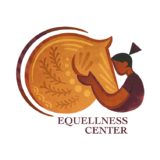Rhythm is an essential element in our lives that helps us function in a healthy and balanced way. It allows us to synchronize our movements and our thoughts, and it creates a sense of order and structure that can be incredibly beneficial, especially for children. At The Equellness Center, we value the importance of rhythm in children’s lives and recognize how equine-assisted activities and bottom-up regulation can help instill rhythm into a child’s life.
Rhythm is everywhere around us, from the beat of a song to the ticking of a clock. It is an inherent part of our biology and our environment, and it is crucial for our development and wellbeing. For children, having a sense of rhythm can help them develop coordination, balance, and motor skills, as well as emotional regulation and social skills.
Equine-assisted activities, such as rhythmic horseback riding, grooming, or leading can be an excellent way to introduce children to rhythm. Horses move in a rhythmic way, which can help children synchronize their movements and develop a sense of balance and coordination. Moreover, working with horses can be a powerful way for children to connect with nature and develop a sense of responsibility and empathy.
Another aspect that contributes to the effectiveness of equine-assisted activities is bottom-up regulation. Bottom-up regulation refers to the activation of the sensory and motor systems in the body to regulate emotions and behavior. When children engage in activities that stimulate their senses, such as petting or grooming a horse, they activate their sensory system, which can help regulate their emotions and create a sense of calmness and relaxation.

Incorporating bottom-up regulation into equine-assisted activities can help children develop a stronger sense of rhythm by focusing on their bodily sensations and movements. This can be particularly helpful for children who struggle with attention or have sensory processing issues.
In conclusion, the importance of rhythm in children’s lives cannot be overstated. It is a fundamental element that can help children develop physical, emotional, and social skills. Equine-assisted activities and bottom-up regulation can be powerful tools for instilling rhythm in a child’s life by connecting them with nature, stimulating their senses, and helping them synchronize their movements. By incorporating these activities into a child’s routine, parents and caregivers can provide them with a rich and meaningful experience that can have a lasting impact on their development and wellbeing.


